|
My favorite analogy for Tokyo is Manhattan on steroids, but on this SOS 2018 Japan Ambassadors trip to Tokyo, I have come to realize that even this expression greatly undersells this dynamic metropolis. Perhaps it would be better to refer to it as L.A.-Houston-Chicago-Miami-San Francisco-D.C.- Manhattan on steroids 20 years into the future, but that would be too inelegant for such an elegant city, so let’s just keep referring to it as Tokyo.
Just the first full day of our visit to Tokyo illustrates what I am talking about. We start off on our tour by driving by the Imperial Palace where the descendants of longest-reigning imperial family in the world resides, and on our way, we pass by group of five go-carts driven by people dressed in Mario outfits. (Where else are you going to get such a contrast of the grandest and wackiest views at one go?) And because it also happens to be the capital of Japan, we were fortunate enough to get a briefing from a State Department official on Japan to kick off the trip. After visiting one of the oldest temples in the city, Sensoji, we took a tour of the Museum of Emerging Science and Innovation where we got a glimpse of what the future may look like. Lastly, we hit Harajuku, the fashion district for the young and hip. I doubt you would find such a diverse experience all in one city anywhere else in the world. After a day of the utmost urban, we have shifted gears on day two and are in pursuit of natural beauty. Just a couple of hours drive outside of Tokyo, we are visiting the beautiful lakes surrounding Mt. Fuji--the most recognized mountain in the world and World Heritage Site--to get a glimpse of its majestic beauty. Unfortunately, the clouds are a little thick this day, so we never get a full view, but no one seems to be that bothered because the ropeway trip to, and boat ride through a lake or two gave us plenty of natural beauty to enjoy. Day three is fish and bear day. For fish, we tour Tsukiji Fish Market, the largest market of its kind in the world. If something lives in the sea, then you will find it here. There is whale, skewered baby octopus, shark, salmon, seaweed and sushi just to name a few items. For the bear part of the day, we take a plane to Kumamoto, which translates roughly as “place of bears”, and are overwhelmed with images of the prefecture’s cute mascot, Kumamon, which roughly translates as “bear monster”. We give our students one last bear hug before they are matched up with their host families. As we announce which student is going off with which host family, one could say that the excitement in the room was almost unbearable. Warmth and beauty are the themes that characterize the fourth day of our trip. Despite the sweltering heat that our host themselves are suffering, they display nothing but the warmest hospitality towards us as they provide a tour of the city’s history and cultural artifacts. Our first stop is Kumamoto’s historical heart and soul, Kumamoto Castle. Our volunteer guides seek out the coolest spot for us to stop at so they can patiently and cheerfully provide the history of the castle. Despite the damage to some parts of the castle suffered in 2016 from a 7.0 magnitude earthquake, one can still appreciate the grandeur and beauty of Japan’s unique architectural style. Yet what I find most interesting is the analogy between our hosts’ hospitality and the castle’s recovery operation. Just as our caretakers pay attention to the small details to enhance our appreciation, the reconstruction team numbers each of the thousands of stones that have been displaced by the earthquake so that the level of fidelity in the rebuilding will be as close to perfection as possible, and just as our hosts patiently enlighten us, the planners project 20 years for the project’s completion. In the afternoon, we are given tours of a Japanese garden, Suizenji, and the traditional craft center. The garden and crafts are prime examples of how Japan’s highly developed esthetic sense, attention to minute detail, and idiomatic nature of an island nation contribute to the uniqueness and beauty of Japanese art. I do not think it would be exaggerating in the least if I were to describe our experience on this fifth day as the essence of a cultural exchange. After their Japanese homestay breakfast, Ambassadors were given a tour of the town’s castle. After lunch, volunteers from the community brought yukata, a traditional Japanese summer kimono, and dressed each student individually, and while wearing the yukata, students were taken to a tea room where kimono-clad women performed traditional tea ceremony. Following this, about 30 students from several Kumamoto high schools came to the international center where they and SOS Ambassadors exchanged handshakes, smiles, information about each other’s respective cities, and Snapchat addresses. SOS Ambassadors taught the Japanese students everything from American slang to games such as pretzel. The afternoon was capped off with dancing. On this second to last full day of our journey, we began our day with an information session about the Hiroshima atomic bombing led by one of our student ambassadors. We took the Shinkansen, Japan’s high speed Bullet Train, to Hiroshima and went straight to Peace Park. Students were given a guided tour of the park and visited the museum. The day was not completely filled with depressing news of the past however. In the evening, Japan Ambassadors engaged in one of Japan’s favorite past-times—karaoke. On the last full day of the trip, the group took a boat through the Seto Inland Sea to Miyajima, a small island in the sea that is considered one of the seven most beautiful spots in Japan. The island is famous for its friendly deer and Itsukushima Shrine. The shrine’s large “torii”, or entrance gate, was built so that its base is submerged by tide and is the most photographed shrine gate in Japan. After the touring the island, students made momijimanju, a traditional Japanese confectionary the island is famous for. The evening was capped with a delicious meal on the top floor of the hotel, where students could enjoy a view of the bright lights of the entire city. After the meal, students took turns sharing with the group their reflections of their experience in Japan.
1 Comment
|
AuthorMr. David Shimizu is the author of this blog. He runs the Japan Program for SOS. ArchivesCategories |







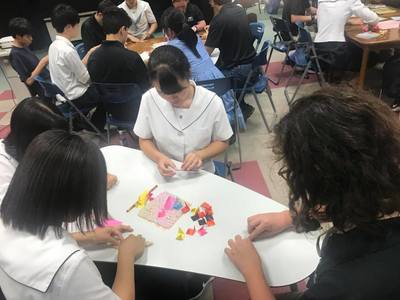
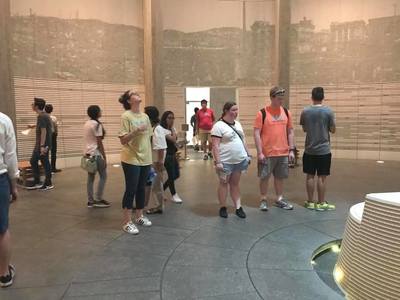

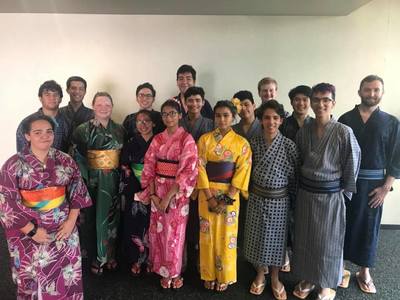
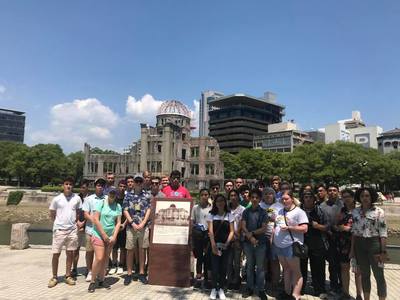



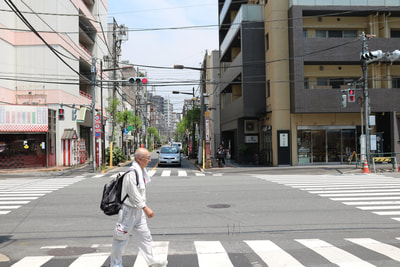



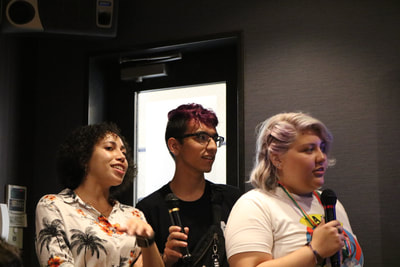

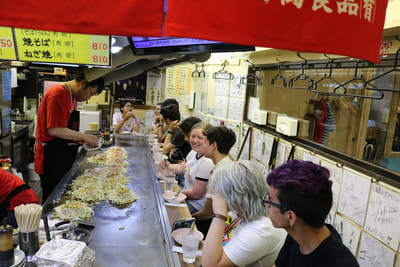



 RSS Feed
RSS Feed